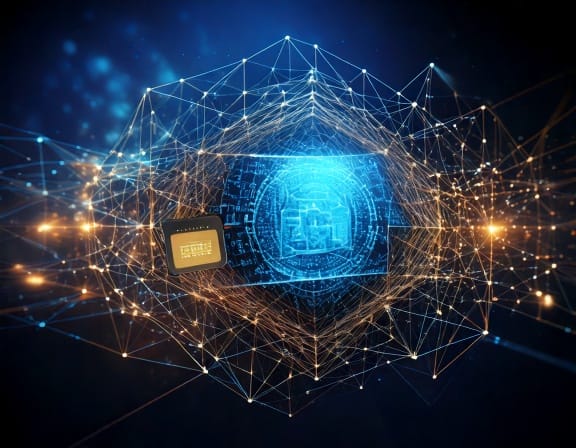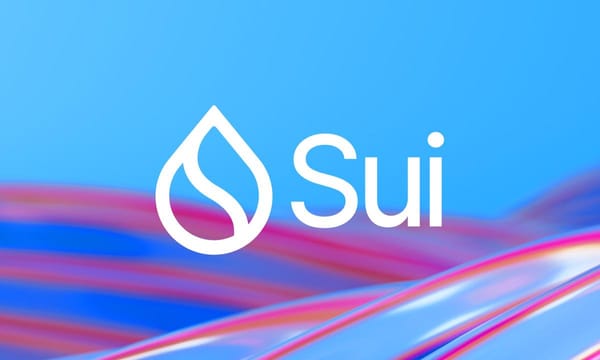Mapping Traditional Payment Systems to Sui Blockchain

The Sui blockchain, with its high throughput, low latency, and secure smart contract capabilities, presents a compelling opportunity to revolutionize traditional payment processing. This article delves into how traditional payment processing compute resources can be mapped to the Sui blockchain. It also explores the potential of Move smart contracts to create a seamless interface between these two systems.
Sui's Advantages for Payment Processing
Sui possesses several key features that make it well-suited for payment processing:
-
High Throughput: Sui can process tens of thousands of transactions per second, far exceeding the capacity of many traditional payment systems. This is achieved through its innovative consensus mechanism and parallel execution capabilities1.
-
Low Latency: Sui boasts sub-second finality for many transactions, ensuring near-instantaneous settlement of payments. This is crucial for time-sensitive applications and enhances the overall user experience1.
-
Object-Centric Model: Sui structures data as independent objects rather than accounts. This model simplifies data management, improves efficiency, and enables parallel transaction processing2.
-
Parallel Execution: Unlike traditional blockchains that process transactions sequentially, Sui can execute many transactions in parallel. This significantly increases throughput and reduces latency, leading to faster payment processing and lower fees3.
-
Move Programming Language: Sui utilizes Move, a secure and efficient smart contract language designed specifically for blockchain applications. Move's features, such as its resource-oriented programming model and formal verification capabilities, enhance the security and reliability of payment processing solutions2.
Move Smart Contract Capabilities for Payment Processing
Move offers several powerful features that can be leveraged to build robust and efficient payment processing solutions on the Sui blockchain:
-
Resource-Oriented Programming: Move's unique approach to resource management ensures that digital assets are handled securely and cannot be accidentally lost or duplicated. This is crucial for maintaining the integrity of payment transactions4.
-
Formal Verification: Move supports formal verification, allowing developers to mathematically prove the correctness of their smart contracts. This enhances the reliability and security of payment processing applications4.
-
Parallel Execution: Move is designed to support parallel execution, enabling Sui to process multiple transactions concurrently. This significantly improves throughput and reduces latency, leading to faster payment processing5.
-
Flexibility and Composability: Move allows developers to define custom data structures and create complex interactions between smart contracts. This flexibility enables the development of innovative payment solutions tailored to specific needs6.
-
Security and Safety: Move incorporates strong security features to prevent common vulnerabilities, such as reentrancy attacks and unauthorized access to funds. This enhances the security of payment transactions and protects user assets5.
Traditional Payment Processing Compute Resources and Sui Blockchain Mapping
| Traditional Resource | Sui Equivalent | Move Contract Potential |
|---|---|---|
| Point of Sale (POS) System | Sui Wallet, dApps | Smart contracts can facilitate secure and instant payment processing at the POS, integrating with existing POS systems or creating new decentralized POS solutions. For example, a retail store could use a Sui-based POS system to accept payments directly from customers' Sui Wallets, eliminating the need for intermediaries and reducing transaction fees7. |
| Encryption Layer | Sui's cryptography primitives | Move's security features and Sui's object-centric model can be leveraged to create secure encryption layers for protecting sensitive payment data. Smart contracts can be used to encrypt payment information before it is transmitted, ensuring confidentiality and preventing unauthorized access8. |
| Payment Gateway | Sui-based payment gateways | Smart contracts can be used to build decentralized payment gateways that facilitate secure and efficient routing of payments across different platforms. These gateways can automate payment authorization, settlement, and reconciliation processes, reducing manual intervention and improving efficiency9. |
| Decryption Layer | Sui's cryptography primitives | Similar to the encryption layer, Move smart contracts can be used to create secure decryption layers for authorized access to payment data. This ensures that only authorized parties, such as the merchant or the acquiring bank, can decrypt and access the payment information10. |
| Fraud Monitoring & Detection System | On-chain fraud detection modules | Smart contracts can be designed to analyze transaction patterns and identify potentially fraudulent activities in real-time. By monitoring transaction data for anomalies, such as unusual spending patterns or suspicious account activity, these modules can help prevent fraud and protect users11. |
| Payment Processor | Sui-based payment processors | Move smart contracts can automate payment processing tasks, such as transaction validation, settlement, and reconciliation. This can streamline payment operations, reduce manual effort, and improve efficiency11. |
| Card Network | Sui-based decentralized network | Sui's object-centric model can be used to represent card networks and facilitate secure and efficient card transactions. Smart contracts can be used to manage cardholder data, authorize transactions, and settle payments between issuing and acquiring banks12. |
| Issuing Bank | Sui-based token issuance platforms | Smart contracts can be used to issue and manage tokens that represent fiat currencies or other forms of value. These tokens can be used for payments within the Sui ecosystem, enabling seamless and efficient transactions13. |
| Acquiring Bank | Sui-based acquiring services | Smart contracts can automate the process of acquiring payments from merchants and settling funds with issuing banks. This can reduce processing times and improve efficiency for both merchants and banks14. |
| Storage Database | Sui's object store | Sui's object store provides a secure and efficient way to store payment data, transaction history, and other relevant information. This ensures data integrity and availability, while also enabling efficient retrieval and analysis of payment data15. |
| Redundancy | Sui's consensus mechanism | Sui's consensus mechanism ensures redundancy and fault tolerance, guaranteeing the integrity and availability of payment data. This prevents data loss and ensures that payment processing can continue even in the event of network failures or individual node outages16. |
Sui's Mysticeti Protocol and Consensus Algorithm in Traditional Payment Processing
Sui's Mysticeti protocol and consensus algorithm offer significant advantages for payment processing:
-
High Throughput: Mysticeti enables Sui to process tens of thousands of transactions per second, exceeding the capacity of most traditional payment systems1.
-
Low Latency: Mysticeti achieves sub-second finality for transactions, ensuring near-instantaneous settlement of payments1.
-
Reduced Costs: Sui's efficient consensus mechanism minimizes computational overhead, leading to lower transaction fees compared to traditional systems. While gas fees on Sui are determined by both computation and storage, the overall efficiency of the platform contributes to lower costs2.
-
Enhanced Security: Mysticeti is a Byzantine Fault Tolerant consensus protocol, providing robust security against attacks and network failures17.
These features make Sui well-suited for handling the high volume and speed requirements of modern payment systems.
DeepBook's Potential in Traditional Payment Processing
DeepBook, a decentralized central limit order book (CLOB) built on Sui, offers several features relevant to traditional payment processing:
-
Enhanced Liquidity: DeepBook provides a platform for pooling liquidity, enabling efficient matching of buy and sell orders for various assets. This can improve liquidity for payment transactions and facilitate faster settlements18.
-
Improved Price Discovery: DeepBook's CLOB structure facilitates transparent price discovery, ensuring fair and efficient pricing for payment transactions. This can benefit both buyers and sellers by providing a clear and accurate view of market prices19.
-
Reduced Costs: DeepBook's decentralized nature eliminates intermediaries, potentially lowering transaction fees compared to traditional payment systems. This can make payment processing more cost-effective for businesses and consumers20.
By integrating DeepBook's functionalities, traditional payment systems can benefit from increased efficiency and reduced costs.
Sui's Integration of Ondo Finance USDY and Its Implications
Sui's integration of Ondo Finance USDY, a tokenized US Treasury product, offers insights into how traditional payment systems can leverage tokenized assets:
-
Increased Accessibility: Tokenized assets like USDY provide a way for users to access and transact with traditional financial instruments on the blockchain. This can democratize access to financial products and services, making them available to a wider range of users21.
-
Enhanced Liquidity: Tokenized assets can be easily traded on decentralized exchanges, increasing liquidity and facilitating faster settlements. This can improve the efficiency of payment systems and reduce settlement times22.
-
Improved Efficiency: Smart contracts can automate the management of tokenized assets, streamlining processes and reducing operational costs. This can lead to more efficient and cost-effective payment solutions23.
-
24/7 Global Transactions: Tokenized assets can be integrated with existing payment networks, such as Mastercard's Multi-Token Network, to enable seamless and instant access to traditional financial instruments. This can facilitate 24/7 global transactions and improve cash management for businesses23.
By incorporating tokenized assets, traditional payment systems can offer new functionalities and improve efficiency.
Sui's Advanced Features for Payment Processing
Sui incorporates several advanced features that can further enhance payment processing:
-
Dynamic Fields: Dynamic fields allow for flexible data management within objects, enabling the representation of complex payment data and facilitating adaptability to evolving payment needs25.
-
Randomness: Sui supports verifiable randomness, which can be used to ensure fair transaction processing and prevent manipulation in payment systems25.
-
Package Upgrades: Sui allows for seamless upgrades of smart contract packages, enabling continuous improvement and adaptation of payment processing solutions without disrupting existing functionalities25.
-
Sponsored Transactions: Sui supports sponsored transactions, allowing applications to cover gas fees on behalf of users. This can simplify payment processing for users and improve accessibility25.
-
Zero-Knowledge Proofs: Sui integrates zero-knowledge proofs, enhancing privacy and security in payment transactions by enabling verification of information without revealing the underlying data25.
-
Advanced Cryptography: Sui utilizes advanced cryptography primitives to ensure the security and integrity of payment data and transactions25.
Benefits and Challenges of Sui-Based Payment Processing
Integrating traditional payment processing with the Sui blockchain offers numerous benefits:
-
Seamless Transactions: Sui enables streamlined payment processing, reducing friction and improving the customer experience26.
-
Multiple Payment Options: Sui can support a wide range of payment methods, including traditional options like credit cards and digital wallets, as well as emerging options like cryptocurrencies26.
-
Enhanced Security: Sui's robust security features and consensus mechanism protect payment data and transactions from fraud and unauthorized access.
-
Increased Efficiency: Sui's parallel execution and low latency capabilities improve the efficiency of payment processing, reducing settlement times and operational costs.
-
Transparency and Auditability: Sui's blockchain-based nature ensures transparency and auditability of payment transactions, fostering trust and accountability.
However, some challenges need to be addressed:
-
Scalability: While Sui is designed for high throughput, ensuring scalability to handle the massive volume of global payment transactions requires ongoing development and optimization27.
-
Interoperability: Integrating Sui with existing payment systems and infrastructure requires establishing interoperability standards and protocols27.
-
Regulation: The evolving regulatory landscape for blockchain technology and digital assets needs to be carefully navigated to ensure compliance and legal certainty for Sui-based payment solutions27.
Sui's unique features, such as its object-centric model, parallel execution, and Move programming language, provide solutions to many of these challenges.
Conclusion
The Sui blockchain presents a compelling opportunity to revolutionize traditional payment processing. By leveraging Move's advanced smart contract capabilities, payment processors can create more efficient, secure, and accessible payment solutions. Sui's high throughput, low latency, and object-centric model address key challenges in traditional payment systems, while features like DeepBook and tokenized assets further enhance its potential. The integration of Ondo Finance USDY demonstrates how Sui can bridge traditional finance with the blockchain, paving the way for innovative payment solutions that combine the best of both worlds. As Sui continues to evolve and mature, it is poised to become a leading platform for the future of payment processing, driving innovation and transforming the way we transact value.
Works cited
-
Mysticeti - Sui, accessed March 12, 2025, https://sui.io/mysticeti
-
What is Sui Network? (SUI) How it works, who created it and how it is used | Kraken, accessed March 12, 2025, https://www.kraken.com/learn/what-is-sui-network-sui
-
All About Parallelization - The Sui Blog, accessed March 12, 2025, https://blog.sui.io/parallelization-explained/
-
Move on Aptos Goes Beyond Ethereum: Why Move is the Best Smart Contract Language | by VibrantX Finance | Mar, 2025 | Medium, accessed March 12, 2025, https://medium.com/@VibrantxFinance/move-on-aptos-goes-beyond-ethereum-why-move-is-the-best-smart-contract-language-7d65e503dc7b
-
Smart Contracts (Move) - Aptos Docs (en), accessed March 12, 2025, https://aptos.dev/en/build/smart-contracts
-
Move Concepts - Sui Documentation, accessed March 12, 2025, https://docs.sui.io/concepts/sui-move-concepts
-
How Can Blockchain Revolutionize the Point of Sale (POS) Process? - Rejolut, accessed March 12, 2025, https://rejolut.com/blog/blockchain-pos-process/
-
awesome-move/README.md at main - GitHub, accessed March 12, 2025, https://github.com/MystenLabs/awesome-move/blob/main/README.md?ref=blog.sui.io
-
- Create a Smart Contract | Aptos Docs (en), accessed March 12, 2025, https://aptos.dev/en/build/guides/build-e2e-dapp/1-create-smart-contract
-
Decryption in a smart contract - Ethereum Stack Exchange, accessed March 12, 2025, https://ethereum.stackexchange.com/questions/13161/decryption-in-a-smart-contract
-
Move, the revolutionary smart contract language powering Sui, accessed March 12, 2025, https://sui.io/move
-
Move - A Web3 Language and Runtime - Aptos Docs (en), accessed March 12, 2025, https://aptos.dev/en/network/blockchain/move
-
Programmable bank accounts: unlocking the future of finance with smart contracts | by Jonny Fry | Mar, 2025, accessed March 12, 2025, https://jonnyfry175.medium.com/programmable-bank-accounts-unlocking-the-future-of-finance-with-smart-contracts-90239cb293ea
-
Collateral Transfer – Moving Towards Digital Blockchain Assets - IntaCapital Swiss, accessed March 12, 2025, https://intacapitalswiss.com/collateral-transfer-moving-towards-digital-blockchain-assets/
-
What is Smart Contract Storage Layout? - Alchemy Docs, accessed March 12, 2025, https://docs.alchemy.com/docs/smart-contract-storage-layout
-
Implementing redundancy in smart contract to prevent unwanted behavior and vulnerabilities [closed] - Ethereum Stack Exchange, accessed March 12, 2025, https://ethereum.stackexchange.com/questions/6428/implementing-redundancy-in-smart-contract-to-prevent-unwanted-behavior-and-vulne
-
Mysticeti – The Consensus Mechanism of Sui - blockscholes, accessed March 12, 2025, https://www.blockscholes.com/premium-research/mysticeti-the-consensus-mechanism-of-sui
-
Why Sui? Understanding Through the Case of DeepBook | Four Pillars, accessed March 12, 2025, https://4pillars.io/en/opinions/why-sui-why-deepbook
-
Learn and Earn DeepBook (DEEP) Tokens - KuCoin, accessed March 12, 2025, https://www.kucoin.com/learn-and-earn/deep-book
-
What is DeepBook Protocol? - Gate.io, accessed March 12, 2025, https://www.gate.io/learn/articles/what-is-deep-book-protocol/4825
-
Ondo Finance And Sui Blockchain | Digital One Agency, accessed March 12, 2025, https://digitaloneagency.com.au/ondo-finance-and-sui-blockchain/
-
Ondo Finance Surpasses $1bn in Total Value Locked - Markets Media, accessed March 12, 2025, https://www.marketsmedia.com/ondo-finance-surpasses-1bn-in-total-value-locked/
-
Ondo Becomes First RWA Provider On Mastercard Multi-Token Network - PYMNTS.com, accessed March 12, 2025, https://www.pymnts.com/partnerships/2025/ondo-becomes-first-rwa-provider-on-mastercard-multi-token-network/
-
Ondo Finance Becomes First RWA Provider on Mastercard's Multi-Token Network, accessed March 12, 2025, https://www.coinspeaker.com/ondo-finance-becomes-first-rwa-provider-on-mastercards-multi-token-network/
-
Intro to Sui - Fulfilling the Promise of Blockchain, accessed March 12, 2025, https://sui.io/intro-to-sui-1
-
Integrated Payments Guide 2025 | Benefits - Rapid Innovation, accessed March 12, 2025, https://www.rapidinnovation.io/post/what-are-integrated-payments
-
Integrating Blockchain with Traditional Payment Systems: Opportunities and Challenges | by Mark Harridge | Medium, accessed March 12, 2025, https://medium.com/@markharridge/integrating-blockchain-with-traditional-payment-systems-opportunities-and-challenges-e1f642328dbb




